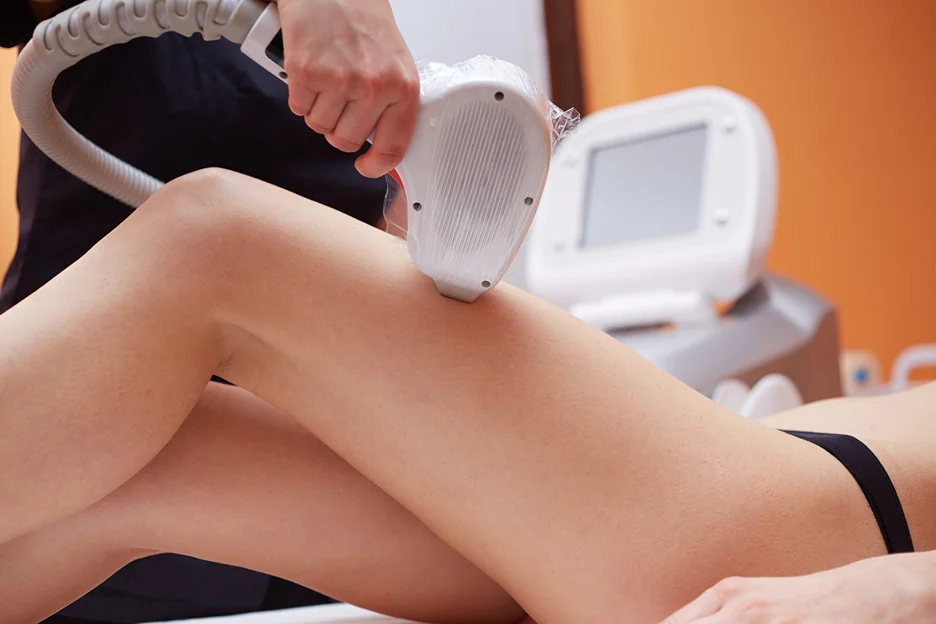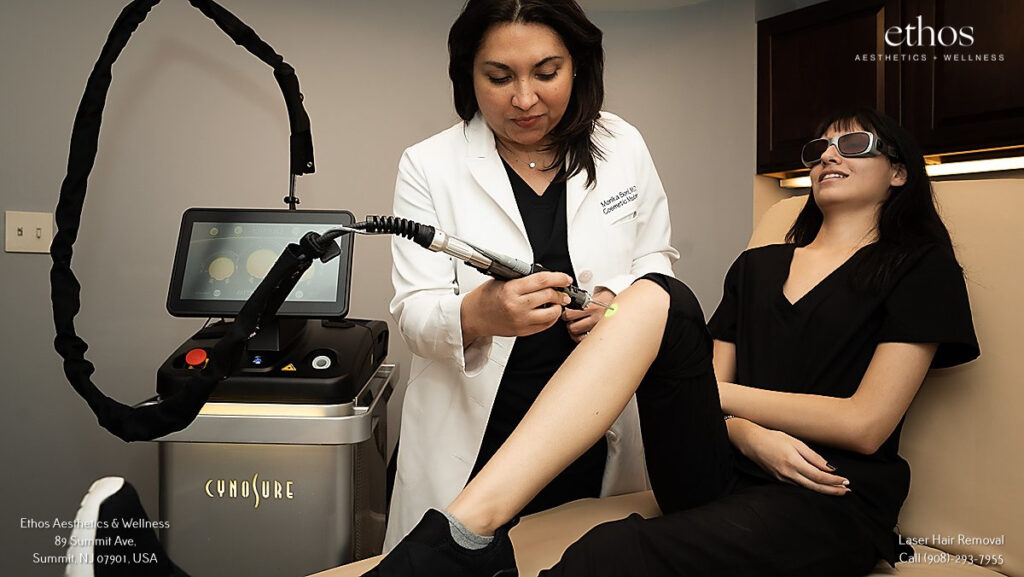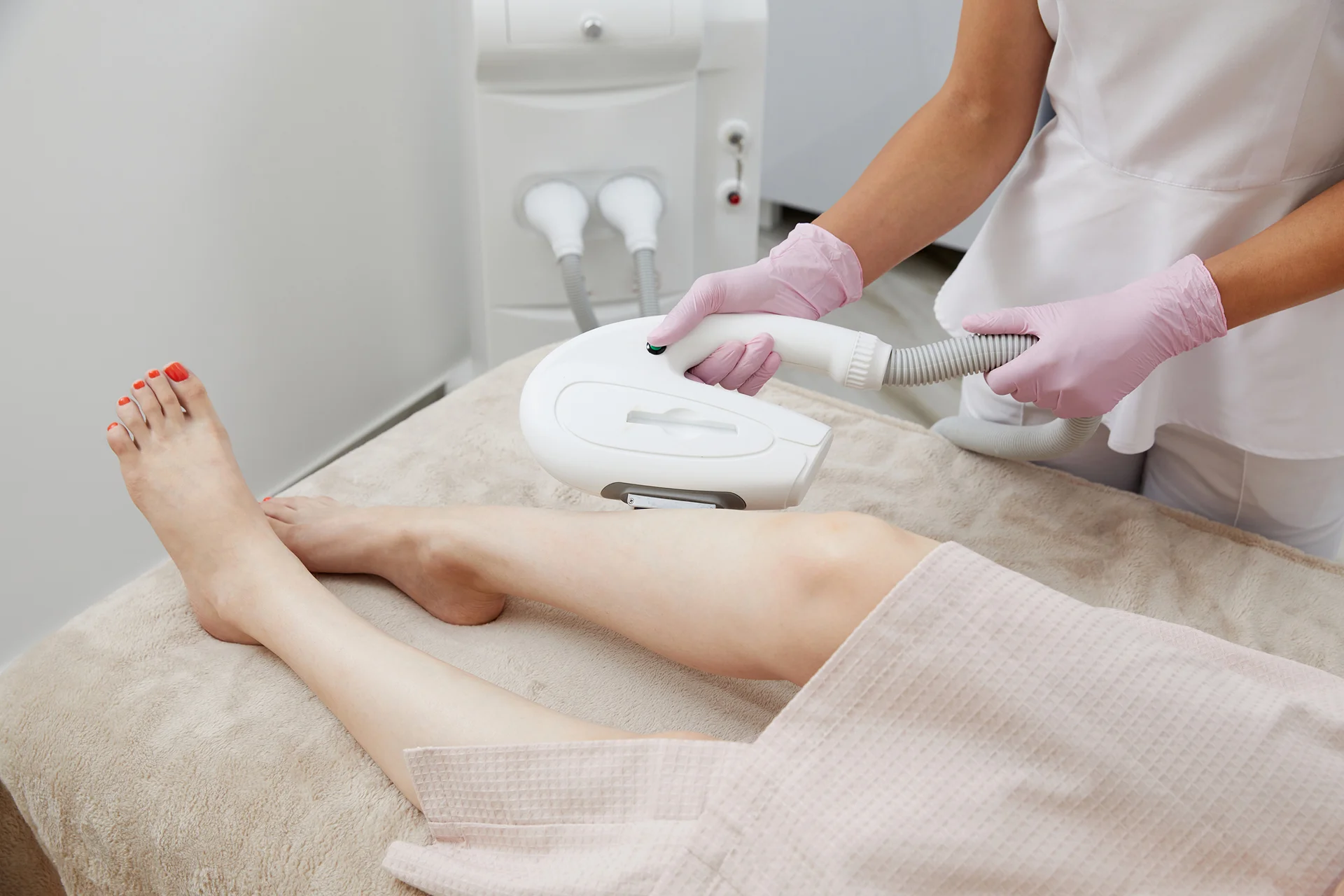g laser hair removal to successfully treat and prevent ingrown hairs.
What Causes Ingrown Hairs and Why Are They a Problem?
Before we explore how laser hair removal helps with ingrown hairs, let’s look at what causes this irritating issue in the first place.
Ingrown hairs form when the freshly shaved hair tip begins growing back into the skin, instead of rising up and out of the follicle. The hair gets trapped underneath and curls back into the surrounding skin, causing bumps, inflammation, and even infection in some cases.
Several factors can increase your risk of developing ingrown hairs:
- Coarse, thick hair: Thicker strands are more prone to curving into the skin when cut, making them more likely to become ingrown.
- Naturally curly hair: Tight curls are more likely to loop back under the skin’s surface, which can also lead to ingrown hairs.
- Shaving: When hair is cut at skin level by a razor, it can easily slide back under the top layer when it starts to regrow, causing ingrown hair.
- Friction and tight clothing: Friction from clothing can also cause ingrown hairs, especially in areas like the thighs and underarms, where the skin is constantly rubbing against other surfaces.
- Clogged pores and dead skin cells: Blocked follicles can prevent hair from growing out properly, leading to ingrown hairs.
- Hormones: Fluctuating hormones in puberty or menopause can accelerate hair growth, which can increase the risk of ingrown hairs.
For many, ingrown hairs are just a minor annoyance that comes with hair removal. But for some, they can cause painful cysts, infection, and scarring if the inflammation goes untreated. People with curly or coarse hair are more prone to chronic, recurring ingrown hairs that require continuous treatment and upkeep.
How Does Laser Hair Removal Prevent and Treat Ingrown Hairs?

While proper exfoliation and shaving techniques can help, laser hair removal offers the most effective and lasting solution for avoiding ingrown hairs. By targeting the root cause – hair regrowth – lasers stop ingrown hairs at their origin.
Laser hair removal uses concentrated pulses of light to penetrate the skin and damage the hair follicle, impeding the hair’s ability to regrow. The laser energy gets absorbed by the pigment in each strand, heating up and disabling the follicle so hair cannot sprout again.
With each successive laser session, more hair follicles are damaged and prevented from producing new growth. While not instantaneous, over the course of treatments laser hair removal results in permanent reduction of up to 90% of unwanted hair. Since hairs cannot become ingrown if they are unable to grow back in the first place, the laser stops ingrown hairs from forming.
The process causes only minimal discomfort and avoids the need for daily shaving or waxing that leads to ingrown hairs popping up in the first place. Compared to temporary hair removal methods, laser hair removal results in smooth, stubble-free skin that stays that way permanently.
How Effective is Laser Hair Removal on Different Skin Tones and Hair Colors?
The primary mechanism behind laser hair removal is the targeting of melanin, the pigment responsible for hair color. More melanin means the laser can work more effectively. Consequently:
- Dark hair on light skin is the most effective combination because the laser easily differentiates between skin and hair due to contrasting melanin levels.
- Conversely, lighter hair colors, such as blonde, red, or gray, lack sufficient melanin, making the laser’s job difficult. As a result, laser hair removal is usually ineffective for these hair colors.
Here’s a simple table to guide your expectations:
| Skin Tone (Fitzpatrick Scale) | Hair Color | Effectiveness of Laser Hair Removal |
| I-II (Very Fair to Fair) | Black or Brown | Most effective |
| III (Medium) | Black or Brown | Effective |
| IV (Olive) | Black or Brown | Somewhat effective |
| V (Light Brown) | Black or Brown | Less effective |
| VI (Dark Brown to Black) | Black or Brown | Least effective |
| I-II | Blonde, Red, or Gray | Not effective |
| III-VI | Blonde, Red, or Gray | Very limited effectiveness |
Remember, these are generalized observations, and the real-world effectiveness can vary. Factors like hair thickness, hormonal imbalances, or previous treatments can play a role. To make an informed decision, seeking advice from a seasoned laser hair removal technician is advised.
What Areas of the Body Can Be Treated by Laser for Ingrown Hairs?
Laser hair removal can safely eliminate unwanted hair from virtually anywhere on the body. It works for both small areas like the upper lip, and larger zones like full legs or backs.
The most common treatment areas for ingrown hair removal include:
| Area | Details |
| Bikini Line/Pubic Area | Due to friction from underwear and swimsuits, ingrown hairs easily develop. Laser provides a worry-free solution, eliminating irritation from waxing or shaving these sensitive areas. |
| Underarms | A prime location for recurring ingrown hairs. Laser hair removal eliminates painful bumps in this area that experiences constant friction. |
| Neck | Facial hair along the neckline is prone to ingrowth when shaved. Laser treatments remove the need to shave this visible area, preventing ingrown hairs. |
| Face | For men, shaving beards and sideburns frequently causes irritation. Laser permanently reduces thick facial hair that’s prone to becoming ingrown. |
| Legs | Thighs and lower legs are hot spots for women due to shaving friction. Laser hair removal prevents the constant irritation associated with smooth, bare legs. |
| Back and Shoulders | Back hair removal can end ingrown hairs on the shoulders and upper back. While loose clothing reduces friction, the coarse texture of back hair still results in ingrowth. |
The bikini area, underarms, and lower legs see the highest demand for laser hair removal among ingrown hair sufferers. But laser hair removal treatments can successfully remove unwanted growth from virtually any area, providing smooth clear skin across the body.
What Should I Know Before Starting Laser Treatments for Ingrown Hairs?
If you deal with chronic ingrown hairs and want to pursue laser hair removal as a solution, there are a few important things to know beforehand:
- Treatment Frequency: Permanent hair reduction requires multiple sessions, typically spaced 4-6 weeks apart, with 6-8 treatments for optimal results.
- Discomfort Level: Laser pulses can feel like a warm rubber band snap. Some temporary redness and swelling can be expected.
- Sun Exposure: Sunscreen is crucial before and after sessions to prevent skin discoloration. Tanning should be avoided.
- Hair Condition: Active hair follicles are targeted by lasers. Waxing or plucking is discouraged, but shaving is acceptable.
- Expected Results: Noticeable reduction in hair growth after 2-3 sessions. Ingrown hairs improve gradually, not immediately.
- Hair Type Suitability: Best results on coarse, dark hairs. Lasers target pigment, making finer and lighter hairs more challenging. However, all hair and skin tones can see some improvement.
- Choice of Clinic: Opt for experienced providers, such as dermatologist offices or medical spas, over generic “laser hair removal clinics”.
Laser Hair Removal: Recovery Timeline
Choosing laser hair removal? Knowing what to expect post-treatment is key. Here’s a step-by-step guide to the healing process, so you’re prepared every step of the way.
| Time Post-Treatment | What to Expect |
| Immediately After | Expect redness and swelling. Typically eases within a few hours. |
| 1 Week After | If there’s stubble, it’s normal. Post a week, you can gently shave once any discomfort or discoloration subsides. |
| 1 Month After | Treated hair starts its exit phase. Keep away from direct sunlight for at least a month post-treatment. |
| 4 to 6 Weeks After | This might be the time for a follow-up treatment. Sessions are usually spaced 4 to 6 weeks apart. |
| Several Months After | To achieve that smooth, hair-free skin, an average of six treatments is needed. This can vary based on the treatment area and individual factors. |
Throughout the recovery period:
- Avoid sizzling hot showers.
- Lean towards fragrance-free skincare products.
- Bypass aggressive scrubs or exfoliants.
If anything feels off, like lingering pain or signs of an infection, reach out to your healthcare provider without delay. Your well-being comes first.
Choose an Experienced Medical Spa for Safe, Effective Laser Hair Removal

While local “laser hair removal clinics” market heavily towards ingrown hair sufferers, visiting an experienced, licensed provider is strongly advised.
A trusted medical spa like Ethos Spa uses advanced laser technology and adheres to strict protocols for safe, optimal results. Our team of knowledgeable clinicians will assess your individual needs and recommend the ideal laser treatment plan.
At Ethos Spa, your comfort and satisfaction are our top priority. We proudly offer the following assurances to each laser hair removal client:
- A customized treatment plan tailored to your unique hair and skin type. This ensures the best possible results.
- The latest FDA-cleared lasers providing fast, gentle treatments for any skin tone.
- A safe, clean medical environment and strict sterilization procedures for every appointment.
- Caring staff dedicated to your education, privacy, and exceptional service throughout your laser hair removal journey.
- Flexible financing options to make this effective ingrown hair solution accessible to all budgets.
Ready to say goodbye to frustrating razor bumps and experience the confidence of stubble-free, irritation-free skin? Schedule a complimentary laser consultation with Ethos Spa today to learn how laser hair removal can successfully treat your ingro







